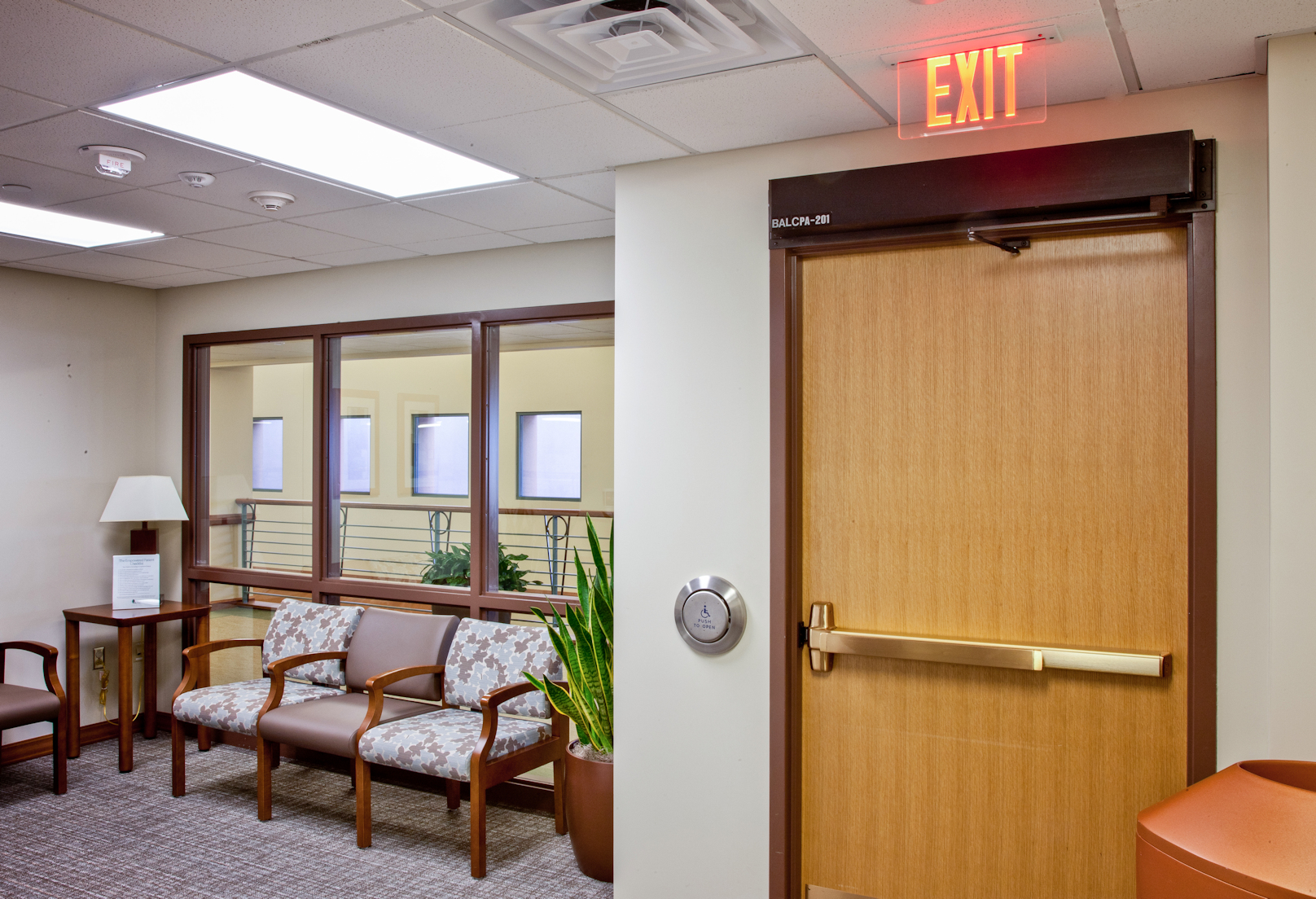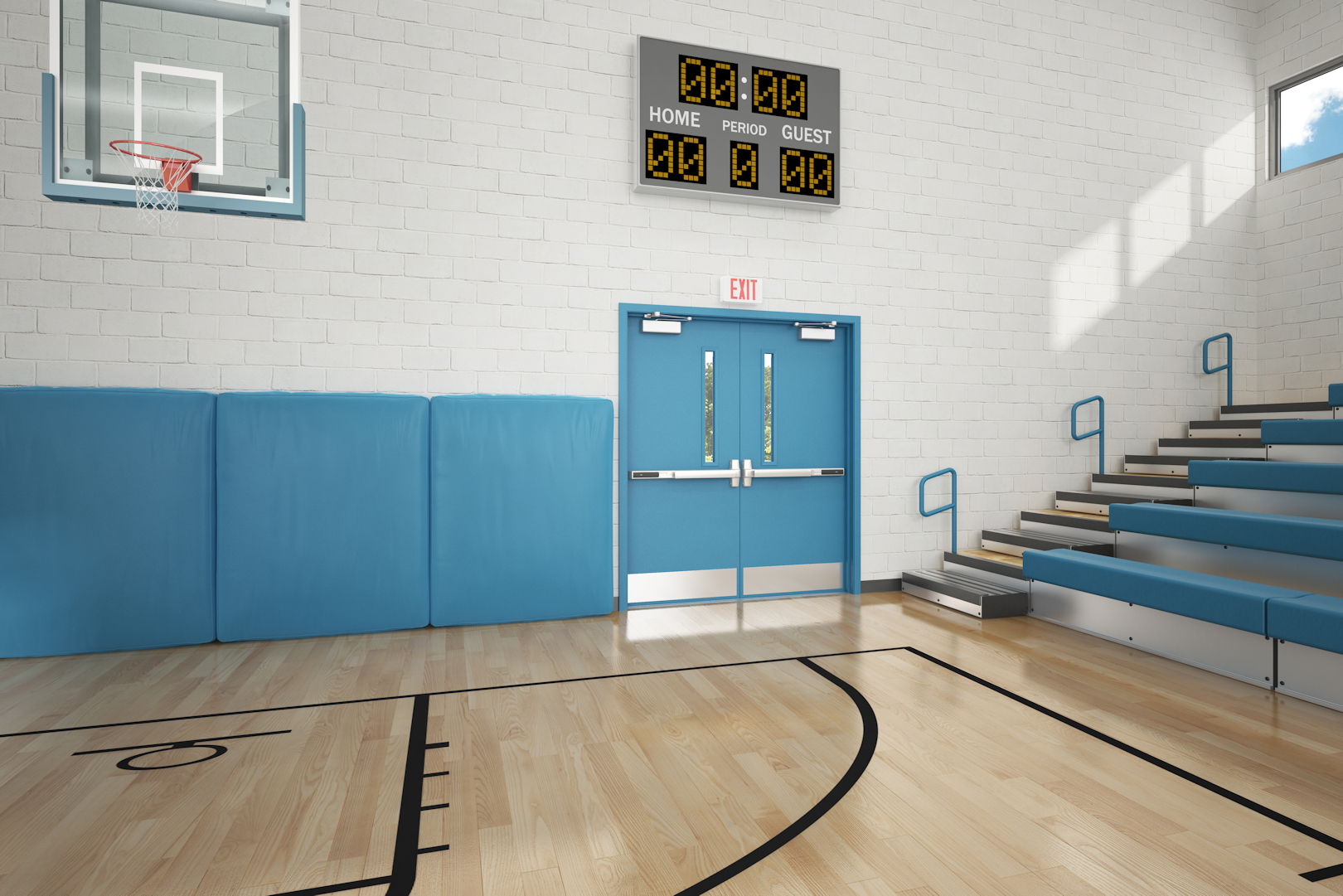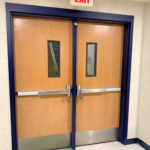This article was published in the October 2019 issue of Locksmith Ledger, and includes some questions that you can use to determine whether your code knowledge is up-to-date.
~~~
In 2009, I started a website that was dedicated to the code requirements that apply to doors and hardware. At that time, no one could have predicted that the site would ever celebrate its 10th anniversary or surpass major milestones like 2 million visits and 4 million pageviews. Each month, readers spend more than 1,000 hours finding answers to their door-related code questions on iDigHardware.com.
Why are code requirements so important that thousands of people are researching them daily? Of course, code-compliant doors, frames, and hardware help to protect building occupants by facilitating free and immediate egress, deterring the spread of smoke and flames during a fire, and allowing access for all – including people with disabilities. If a locksmith does not have a working knowledge of the codes that apply to door openings, this could result in fines for violating the adopted codes, and costly repairs or replacements to rectify the non-code-compliant work. There could also be liability associated with these installations if building occupants are harmed or property damage occurs.
Here are just a few FAQs to help you determine whether you’re current on codes:
Can an existing fire door or fire door frame be modified?

NFPA 80 limits the alterations to fire door assemblies that can be made in the field, and the limitations vary depending on which edition of the standard has been adopted.
NFPA 80 allows certain alterations to be made as job-site preparations. Generally, these include:
- Holes for surface-applied hardware
- Function holes for mortise locks
- Holes for labeled viewers
- A maximum 3/4-inch undercutting of wood and composite doors (verify this with the door manufacturer before modifying the door)
- Installation of protection plates
Prior to the 2016 edition of NFPA 80, holes drilled as job-site preparations were limited to 1-inch diameter with the exception of holes for cylinders. The 2016 and 2019 editions allow holes larger than 1-inch diameter to be drilled at the job-site for surface-applied hardware, where permitted by the door manufacturer’s listing and the hardware manufacturer’s listing.
For alterations that are not specifically allowed by NFPA 80 (for example, preps for electric strikes, cylindrical locks, mortise lock bodies, and some fire exit hardware), permission must be requested in advance to perform a field modification. The door and/or frame manufacturer must be contacted, and the manufacturer will then contact the listing laboratory. If approved, the doors and frames do not need to be recertified or relabeled. If work that is not allowed as a job-site preparation or field modification is performed on a fire door assembly, the doors and frames will likely need to be relabeled in the field, which can be very costly.

Panic hardware is required for assembly and educational occupancies with an occupant load of more than 50 (per the IBC) or 100 (per NFPA 101). Refer to the codes for other locations that require panic hardware.
Which doors are required to have panic hardware?
The answer to this question varies somewhat by code, but the IBC requires panic hardware for doors that lock or latch and are part of an egress route serving an assembly or educational occupancy with an occupant load of 50 people or more. For jurisdictions where NFPA 101 applies, panic hardware is required for assembly, educational, and day care occupancies where the occupant load is 100 people or more. Panic hardware is also required for doors serving high hazard occupancies and for rooms housing electrical equipment of a certain voltage or amperage.
Failure to install panic hardware or fire exit hardware where required by the adopted code could require a very expensive retrofit.
Is it acceptable to add a deadbolt to a door with existing hardware?
Even if a door is not fire-rated, there are very few locations in commercial or institutional buildings where a door can be equipped with latching hardware plus a separate deadbolt. Most doors are required to unlatch with one releasing operation (all latches simultaneously), so two operations to retract the deadbolt and retract the latchbolt of a separate lockset would not be code-compliant. The exception to this is entrance doors to residential dwelling units and sleeping units. These doors are allowed to have a nightlatch, deadbolt, or security chain in addition to the latching hardware. When these doors are fire rated, the NFPA 80 limitations on alterations would require approval from the listing lab to prep for the deadbolt as a field modification.
Many locksmiths also install electrified hardware, so here are some additional questions that involve access (and egress) control:

When a fire door in a stairwell is required to meet the stairwell reentry requirements, an electric strike can not be used.
Can an electric strike be used on a fire door that has to provide for stairwell reentry?
The IBC requires almost all stairwell doors that are locked on the stair side to allow building occupants to leave the stair during a fire to seek another exit. Typically, a fail safe lockset or fail safe trim for fire exit hardware is required.
Using a fail safe electric strike to add access control to stairwell doors would create two problems:
1) the door would not be latched during a fire as required by NFPA 80 for fire door assemblies, and
2) the field preparation for the electric strike would require approval to be performed as a field modification.
It’s highly unlikely that approval would be granted because fail safe electric strikes are not listed for use on fire door assemblies.
What additional components are needed when an electromagnetic lock is installed?
I have seen many installations where an electromagnetic lock has been installed that either releases only upon fire alarm activation or is released for egress by a button on the wall beside the door. If the door is required or intended for egress, both of these installations are serious code violations. The model codes allow electromagnetic locks to be installed in one of two ways:
- Sensor Release: The mag-lock is released by a sensor on the egress side, which detects an approaching occupant and unlocks the door. This type of system also requires an auxiliary push button (marked “Push to Exit”), mounted beside the door; the button must unlock the door for 30 seconds – independent of the access control system. Activation of the fire alarm system and loss of power must also unlock the door and allow free and immediate egress.
- Door Hardware Release: The mag-lock is released by a switch in the door-mounted hardware, such as a request-to-exit (RX or REX) switch in panic hardware or a lockset. Loss of power must also unlock the electromagnetic lock.
Installing an electromagnetic lock without the required release devices may result in doors that do not allow free egress. In a mass shooting in New Zealand, a door with electrified hardware and only a push button beside the door to release it, increased the number of fatalities when building occupants did not know how to unlock the door for egress.
Is there a difference between delayed egress locks and controlled egress locks?
Delayed egress locks typically prevent egress for 15 seconds under normal operation, but they are required to allow immediate egress upon activation of the fire alarm and upon power failure. The use of these locks is limited to certain occupancy types depending on which code has been adopted. The model codes include additional requirements such as an audible alarm, signage, and emergency lighting.
Controlled egress locks were first included by the model codes in the 2009 editions, and they are only allowed in health care facilities where the patients require containment for their safety or security. Common applications include memory care units and newborn nurseries. Where controlled egress locks are approved, the door is not required to allow egress under normal operation. However, in an emergency, the staff must be able to unlock the doors for evacuation. With the exception of behavioral health units, the codes require these doors to be unlocked upon fire alarm, power failure, and sometimes by an additional switch at the nurses’ station. (Watch this video to learn more.)
Learn More
If you need more information on any of these topics, or if you have other questions about code requirements that apply to door openings, visit iDigHardware.com and take advantage of more than 2,300 blog posts on various topics, dozens of videos, online training, and the downloadable code reference guide. The safety of building occupants – and your bottom line – may depend on your understanding of the codes and the ability to apply them accurately.
Note: Most US states adopt one of the model codes, often with state-specific modifications to address local issues. The model codes used in the majority states are the International Building Code (IBC), the International Fire Code (IFC), and NFPA 1, Fire Code which references NFPA 101, Life Safety Code. Referenced standards provide more detailed information about a particular topic. For example, NFPA 80, Standard for Fire Doors and Other Opening Protectives is referenced by all of these model codes and includes additional requirements for fire door assemblies. The model codes and standards are typically revised every three years, and the requirements may vary from one edition to the next. It is critical to find out which code has been adopted in a project’s jurisdiction and then research the applicable requirements.
You need to login or register to bookmark/favorite this content.






Great information Lori. It is always better to refresh our code knowledge from time to time. We thank you for that.
Excellent information, I have been encountering holes drilled in frames to accommodate thumb latch dead bolts
Lots of good and useful information in this blog post. We cover some of these topics on our new online locksmith course we just launched